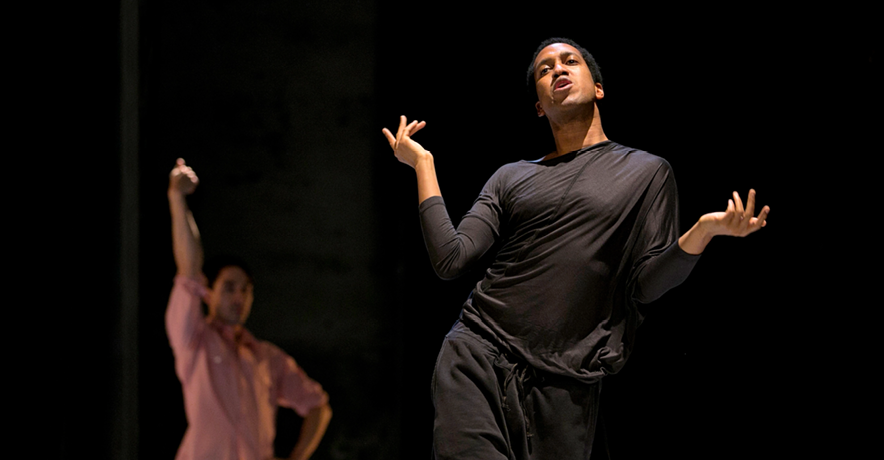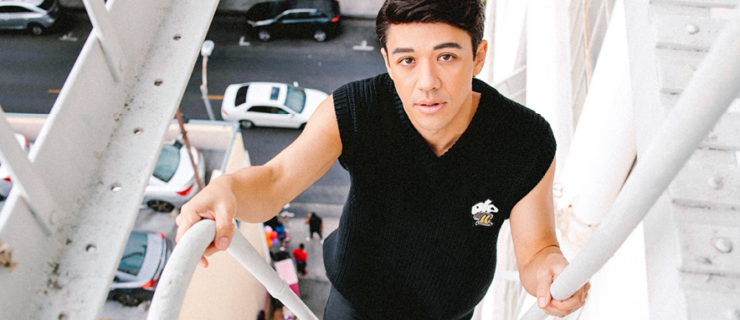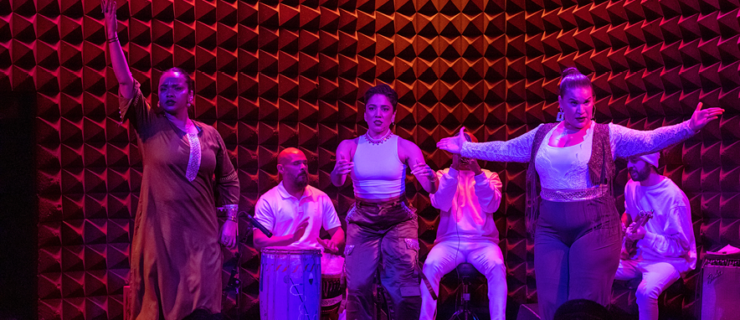Enlivening the Imagination: Trajal Harrell’s Rich Repertoire of Transcultural, Intersectional, and Futuristic Works
A reverent love for the ritual of performance infuses choreographer and director Trajal Harrell’s theatrical style. Who is this man? How does he seamlessly synthesize voguing and runway idioms with butoh, the dances of Greek antiquity, and modern and postmodern dance to create the intriguing works that make him an internationally admired and respected artist? And how has his bold, incisive leadership shaped Schauspielhaus Zürich Dance Ensemble over the past five years?
The Backstory
First things first. Harrell grew up in Douglas, Georgia; his family was part of a Southern, land-owning Black elite—educated and well-established for generations despite segregation and its discontents. The Harrells have a singular sense of history. Harrell explains that his godmother named him Trajal after the Roman emperor Trajan, and his father chose Aurelius as his middle name after the Roman emperor Marcus Aurelius. “It was funny being born in Southeast Georgia with this Roman namesake heritage!” Harrell says.
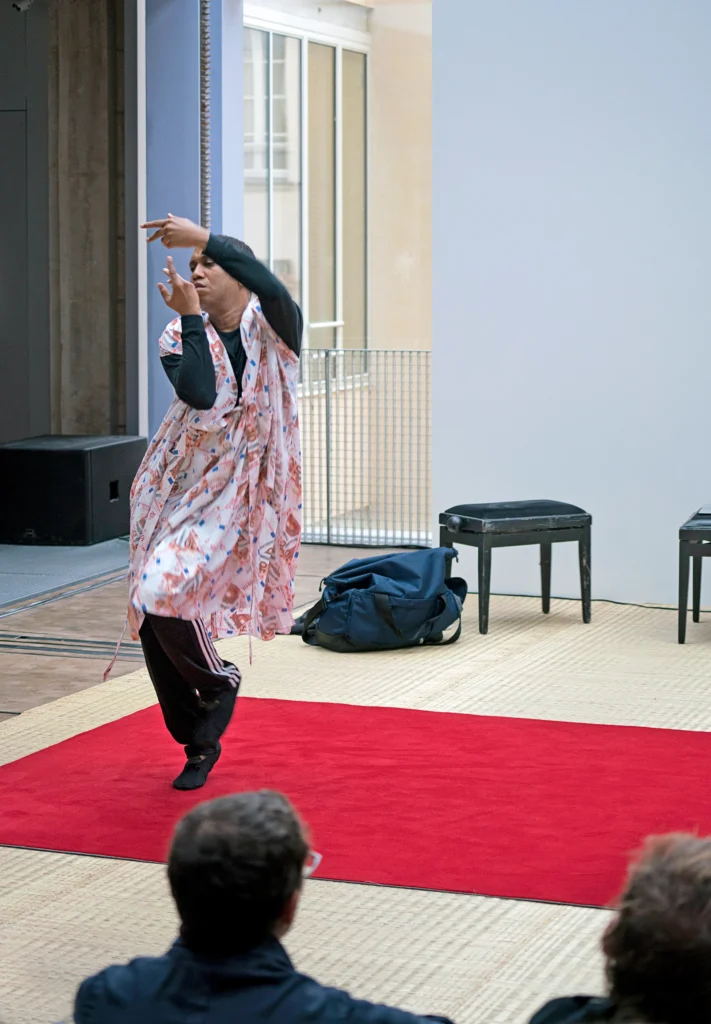
In his youth Harrell was a gymnast and an avid learner, excelling in school and participating in “history day” competitions, a staple in many secondary school districts nationwide. He remembers that he “was kinda the leader—writing, directing, and performing with a group of other students. We won group performance statewide for six years. Clearly, this making performances based on history is still with me.”
At Yale University he majored in American Studies with a concentration in creative processes, thinking he would focus on theater and acting. However, once introduced to the embodied stagecraft of director Anne Bogart and Mary Overlie’s “Six Viewpoints” system of movement research, he felt “it was like coming home, coming back to my body,” and he claims that he “didn’t want to speak onstage anymore. I started making movement-based work.” Around this time a friend said that perhaps he was trying to be a choreographer.
After graduating, he gravitated toward dance and moved to New York City, having also touched down on the West Coast for a short stint in San Francisco. He studied briefly at the Martha Graham School and took composition workshops “with Trisha Brown, herself, and with Yvonne Rainer, herself,” he says. He also found his way to Harlem’s voguing balls and the runway culture of the city’s fashion district—and, later, to butoh, which he studied in Tokyo.
The Inspirations
Harrell cites history as “a way to enliven the imagination.” His repertory is full of historical “what ifs,” beginning with the now-legendary Twenty Looks or Paris is Burning at The Judson Church. Between 2009 and 2017, this project was staged numerous times in, as he describes it, “various sizes,” nationally and abroad. His witty historical proposition explains the long title: What if the largely Black, queer voguing community—brought to mainstream attention by the 1990 film Paris Is Burning—came “downtown” and brought its expressive, glamorous, “over-the-top” genre to Judson Church, Greenwich Village’s temple of minimalist dance?
Many of Harrell’s evening-length works create spaces for different eras and philosophies to converge. Take, for example, these excerpts from the program note for The Romeo, which premiered in 2023:
Picture a dance. Let’s call it the “Romeo,” after Shakespeare’s young lover who, in ignited enthusiasm, believed he could conquer death…. [I]magine this dance that people of all origins, genders, and generations, of all temperaments and moods, dance when they face their tragedies and only dance.
A Harrell dance named after a Shakespearean character will not restate that famous play. Instead, his aesthetic foundations and his personal conceptual scaffolding foreground choreography that is imaginatively wide-ranging, transcultural, intersectional, and futuristic.
Consider the artists Harrell cites as influences. “Sigmar Polke, the visual artist, blew my mind,” Harrell says. “The writer, theorist, and filmmaker Trinh Minh-ha changed my life. I have been inspired by the architecture of Tadao Ando.” Polke produced paintings focused on historical events and perceptions; Minh-ha theorized postcoloniality and feminism; Ando’s architecture reflects Japanese spirituality and Zen-like simplicity. Similar elements can be found in the themes, stage design, costumes, visual richness, and overall “architecture” of Harrell’s creations.
The Movement
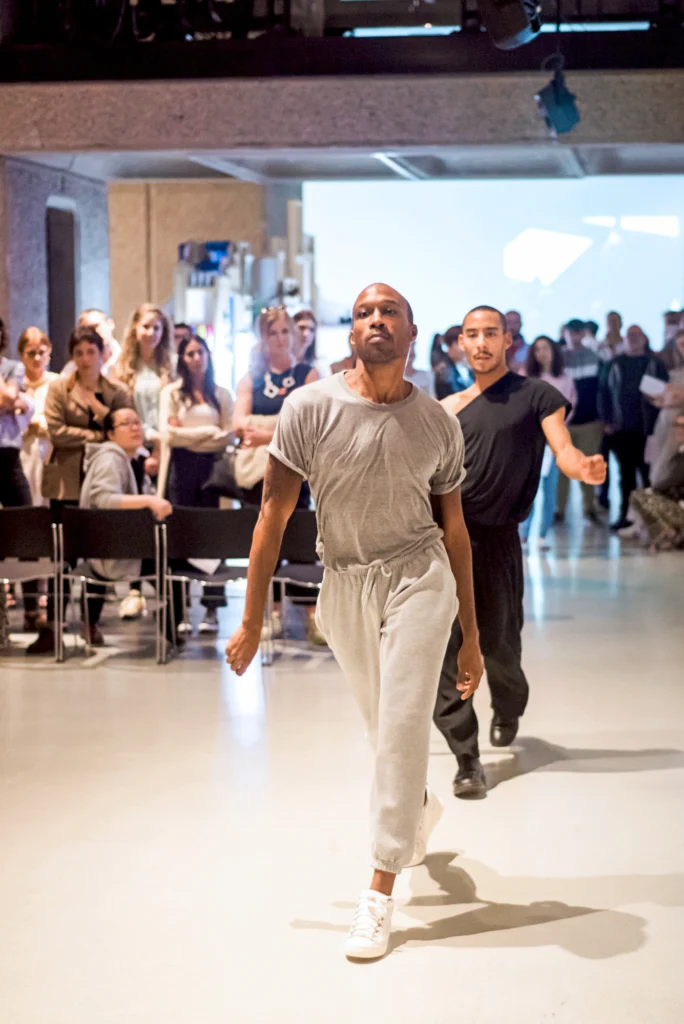
Although his work has evolved since its beginnings, Harrell’s movement vocabulary engages two central motifs. There’s the walking—dancing—on relevé, as though wearing stiletto high heels, while leaning, tilting, sliding, turning, sometimes teetering, yet remaining upright. It’s a challenging balancing act, and his dancers excel in creating character nuances within this limitation. A kick-up-your-heels, dance-till-you-drop, bacchanal “folk” dance is another leitmotif. These modes persist in works as different as Twenty Looks and the recent Monkey off My Back or the Cat’s Meow (2021).
In Harrell’s universe, nothing is rushed, regardless of rhythm or tempo. Each work takes its time. The present moment is his friend, and he invites us to languish and breathe in the heady spaciousness of his vision. He shows a visual artist’s sense of stagecraft, props, and costuming. The floor design in Monkey off My Back… is a stunning rectangular grid of Mondrian-like colored blocks spanning the length of the performance space, with white platform modules set in sofa-like shapes at the center. The audience is seated lengthwise both sides. This longitudinal stretch is used as a catwalk, a dance floor, a showplace.
Harrell’s self-created pop/rock/new music choices speak tropes of love, loss, tumult, and even trance. These elements add up to a repertory of elegance, passion, and compassion, with the dancers delineating their personal constellations in Harrell’s galaxy, in what he says is “a sharing of style, not a mimicry of my movement.” The ensemble is keenly adept at inhabiting this style while adroitly making it their own. The results are exquisitely poignant embodied portraits, including the characters elicited in his sensational Köln Concert, choreographed in 2020, during the pandemic—the first work made in his role as director of the Schauspielhaus Zürich Dance Ensemble. Other portraits, as in the poetically zany Caen Amour, explode with the wily wit and arch humor that Harrell uses to restore popular entertainment varieties to contemporary theater, as it had in ancient Greek and Shakespearean times.
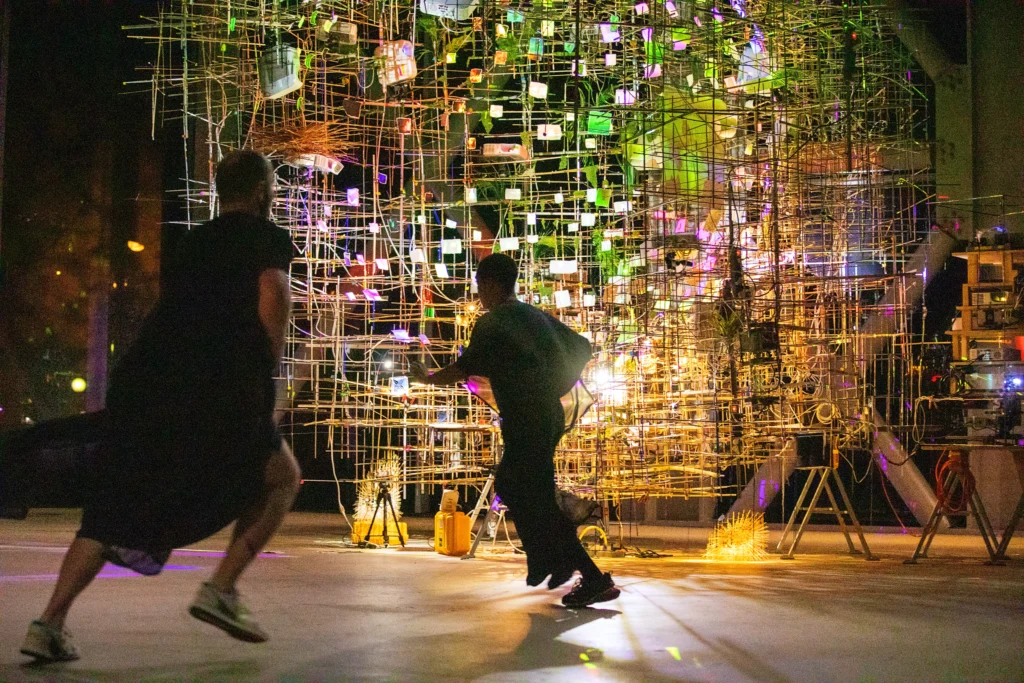
Explaining that he isn’t “the kind of choreographer who can sit back and watch the picture,” Harrell generally dances in his creations. “It must go through my body,” he says. “The choreographer in me has ideas, but I don’t believe in them until the dancer in me signs the contract.”
A tradition that reflects Harrell’s respect for the audience begins before the performance itself. He sometimes stands onstage to greet the audience, who might find him watching with detached though friendly interest as they enter. This reminds us that we are about to see a presentation—that he and his dancers are real people, that performance is mindful artifice. He is intentional with this because, he declares, “I’m in love with my audience. I don’t discriminate. I just love them all, that’s the only way. I usually can’t wait for the opening night: standing onstage, watching them enter. I love that. I love them.”
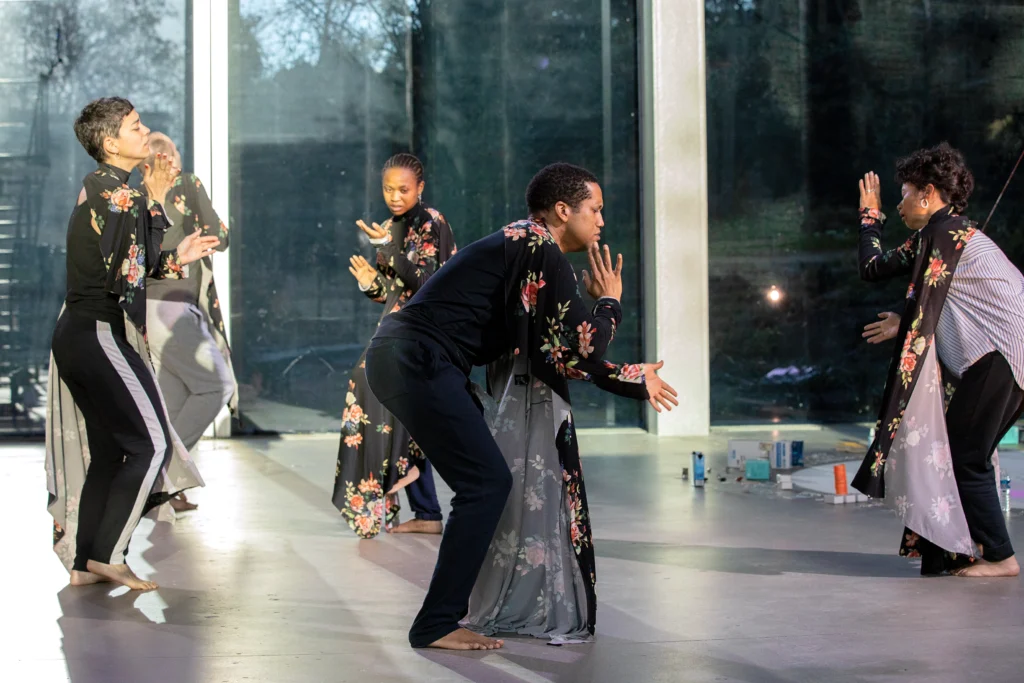
The Next Steps
Later in 2024, Harrell will conclude his successful tenure as director of the Schauspielhaus Zürich Dance Ensemble. In his five years there he created six major works and trained a sterling cadre of ensemble artists. He contemplates his next steps, musing that Zürich “is where I’ll change to the next period of my work: After runway/early-postmodern dance was the first phase, and then butoh/modern dance, now the third phase is coming.” In addition to continuing to develop his company, it may well involve visual arts and opera work.
Fasten your seatbelts for the takeoff, dance lovers!
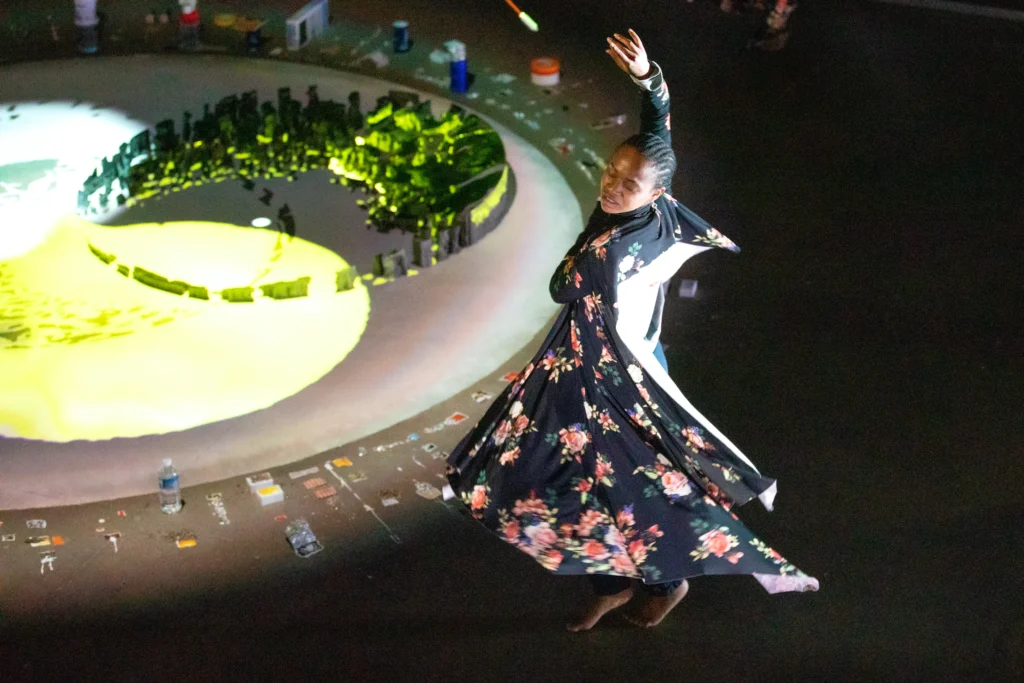
Butoh Mind
Trajal Harrell is deeply stirred by butoh. “My big inspirations now are Kazuo Ohno and Tatsumi Hijikata,” he says. With these forceful influences, a title is more than a name, and a dance event is a special meeting place unlike any other. It is a moment of what Harrell calls “butoh mind.” “Butoh mind is invigorating—where you show the things about yourself that aren’t beautiful,” Harrell says. “When you allow yourself to dance from that place where you can never be perfect, something else happens. People feel that. People recognize it. They know it’s inside them. That becomes beauty!”
In 2013 he first visited Tokyo to study butoh in its birthplace. “I am looking at butoh through the theoretical lens of voguing and voguing through the theoretical lens of butoh,” he says. The result is a deft interfacing of voguing’s glorious pageantry and elaborate flourishes with the guttural, visceral passion of butoh, widening the lens on both genres and creating a captivating hybrid.
What the Dancers Say
Ondrej Vidlar and Thibault Lac began working with Trajal Harrell in 2010. Early on the three dancers worked in duos or trios, “touring from one gig to the other with costumes and set in a suitcase,” Lac says, describing this period as “a process of unlearning, in a way, an emancipation from certain tastes and values about dance learned in school.”
Vidlar enjoys working with the mosaic of performers Harrell brings together, and is grateful that Harrell grants them “the freedom to express his ideas through their own understanding.” He and Lac have a “like family” relationship with Harrell, having developed professionally in and through his artistic vision.
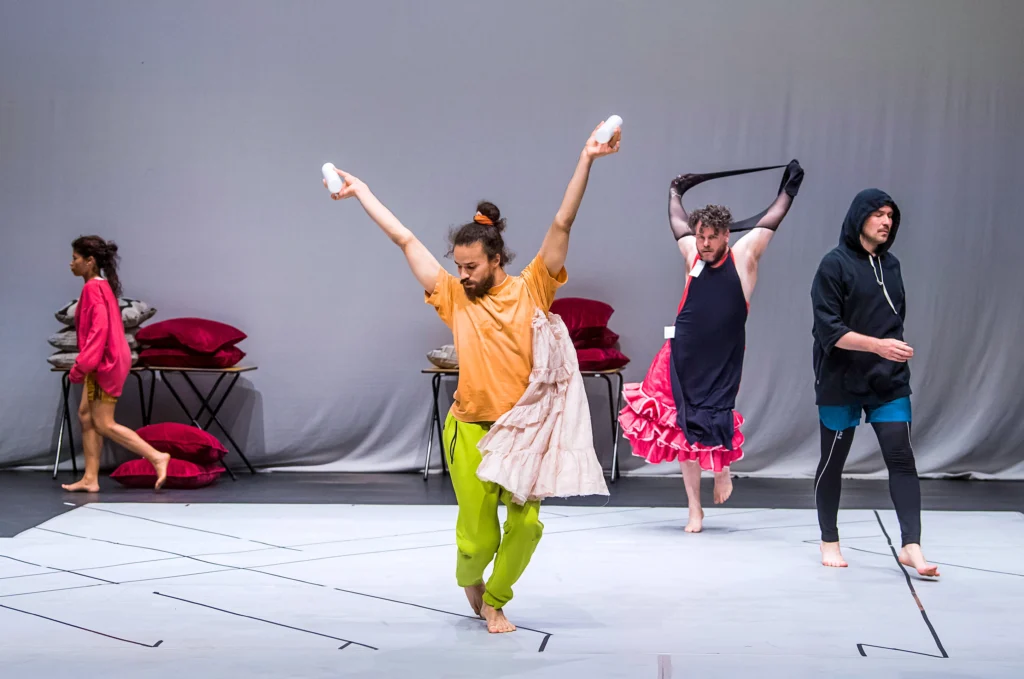
Nasheeka Nedsreal has worked with Harrell since 2018, in Maggie the Cat (2019), Monkey off My Back or the Cat’s Meow (2021), Deathbed (2022), and The Romeo (2023). She cites her admiration of the choreographer’s “subtlety and the delicateness and precision of his approach. Even though we work in the conceptual, there’s deep emotional expression that’s often required, and I appreciate that.”
As an African American woman who, like Harrell, grew up in the American South, Nedsreal sees similarities in their aesthetic processes. “Though I’m not sure where this lust of ours for freedom and improvisation comes from,” she says, “I’m certain there are links to the music of the South, jazz and blues, as well as from the traditions of the church and Black families.” She concludes, wisely: “You can take us out of the South, but you can’t take the South out of us!”
